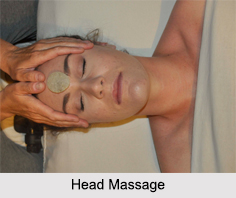 Head Massage is provided to let the receiver of it have some relaxation. Through the massage he or she can release the stress and tension which are accumulated by the activities of daily life. Head Massage is best when applied in morning before bathing or in evening after having finished work. Head Massage is also good for hair; it removes dryness of hair and cures many scalp disorders. It also relaxes muscles and nerves; fatigue is eliminated from the system by it.
Head Massage is provided to let the receiver of it have some relaxation. Through the massage he or she can release the stress and tension which are accumulated by the activities of daily life. Head Massage is best when applied in morning before bathing or in evening after having finished work. Head Massage is also good for hair; it removes dryness of hair and cures many scalp disorders. It also relaxes muscles and nerves; fatigue is eliminated from the system by it.
Importance of Oil in Head Massage
When oil is used during the Head Massage, then it goes deep down the roots of the hair and connects to the nerve fibers, which lead directly to the brain. It helps to circulate the cerebrospinal fluid inside and outside of the brain. There several types of oils, which are good to use during Head Massage- Amla oil, Bhringraj oil, Brahmi Amla oil, Brahmi Amla Shikakai oil, Brahmi Amla Bhringraj Shikakai oil, sesam oil, mustard oil and coconut oil etc.
Body Parts Included in Head Massage
Head Massage includes different parts of the body on which massage is given for different purposes. The areas are given below:
Massage on the forehead helps to calm the system and creates good feelings in the brain.
Massage of the temples improves eyesight and creates a centered state of awareness.
Massage of the eyebrows relaxes the whole body including eyes and it is also beneficial for the nervous system.
Massage of the forehead increases eye sight and the power of concentration.
Scalp massage cures dryness of scalp, hair fall and premature baldness.
Procedure of Head Massage
Head Massage starts from the forehead with the point, which is located in the middle of the eyebrows- the location of seven chakras. After forehead, the massager should massage the scalp with his fingers. While massaging the scalp, oil should be applied on it. At the end of the massage, the hairs are twisted on all the three spots and pulled gently.
Benefits of Head Massage
Head massage increases the supply of fresh oxygen and glucose to the brain, along with the circulation of the life-giving sap of cerebro-spinal fluid. It increases the growth hormones and enzymes, which are necessary for the growth and development of the brain. It also increases the level of pranic energy.




















